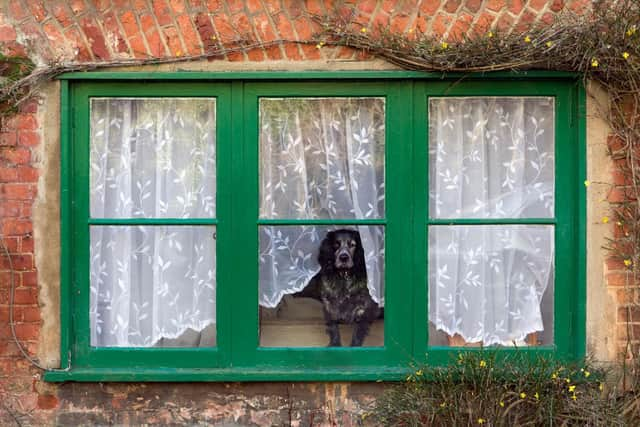Leaving Dogs Alone: Here are 5 expert tips to teach your adorable dog that it's ok to be left home alone 🐶
With party season around the corner, it’s inevitable that our four-legged friend will be left alone at some point this Christmas.
However, new research has highlighted how anxiety affects the day-to-day lives of pet owners – with almost half (48 per cent) admitting that socialising and special events often see them separated from their pets.
Advertisement
Hide AdAdvertisement
Hide AdThe effects of separation anxiety on animals is well documented and a study by Agria Pet Insurance reports that 85 per cent of people feel they are confident in identifying the signs that their dog feels anxious when being apart from their ‘pawrent’.
In fact, four in five (82 per cent) pet owners correctly identified barking and howling as a sign, closely followed by chewing and destructive behaviour (78 per cent) and pacing (69 per cent), although, one in ten (9 per cent) thought there were no signs at all. The full list of symptoms include; vocalisation, pacing, panting, salivating, scratching at doors, destruction or chewing, loss of toilet training, inability to eat when alone and aggression.
Carolyn Menteith, Trainer and Behaviourist, said: “It is important that we think about how our pets are coping on their own, and look for any signs that they are unhappy. Whether you have a young pet you’re preparing to leave for the first time, or an older one who needs some help to feel comfortable by themself, always seek the advice of a qualified pet behaviourist.
“Helping pets to feel relaxed when we’re not with them can take time and effort, so following the right advice as early as you can, can make things much easier for you both.”
Vicki Wentworth, Managing Director at Agria Pet Insurance, added: “The world has changed so much that many of our pets are simply not used to being left alone for short periods of time. Anything we can do as owners to make this experience stress-free, for us and for them, can make an enormous difference. It can be life-changing for a dog that has learned to be confident and relaxed in their own company.”


Here are their top tips.
Take baby steps
At dinner time leave the room or use a stairgate to prevent your pet from following you. They will be too interested in dinner to be worried where you’ve gone - but be aware that a puppy will need to go out to the toilet almost immediately after they’ve eaten. This teaches your dog that good things can happen while you are not there.
Try scatter-feeding
If you have a secure garden, take your dog’s kibble and drop it in the grass for them to hunt out. Once they understand this new feeding game, you can scatter it a bit wider - and leave them for a few minutes while they hunt. This way, they’re learning that good things can and do happen when you are not there - and they are also using their scavenging, foraging and scenting instincts.
Don’t let your dog follow you everywhere
While we often like that our dogs follow us wherever we go, it isn’t good for them to think that they will always have constant access to us. Use equipment such as stairgates in doorways; these are cheap, easy to fit and let your dog see where you are going, so they don’t feel abandoned. You can also give your dog a treat while you’re gone. The aim is that they look forward to your absences, not worry about them.
Advertisement
Hide AdAdvertisement
Hide AdBuild up the time
Once you know your dog is happy being left for a few minutes, you can very slowly build up the length of time you leave them. You are teaching them that being alone is safe and it’s nothing to worry about.
Enlist the help of a pet webcam
If you are at all worried that your dog might not be happy when you leave, use a webcam to find out what they are doing when you are not there, and if they show any signs of separation-related behaviours, consult an accredited behaviour professional with experience in separation anxieties for help.
Comments
Want to join the conversation? Please or to comment on this article.